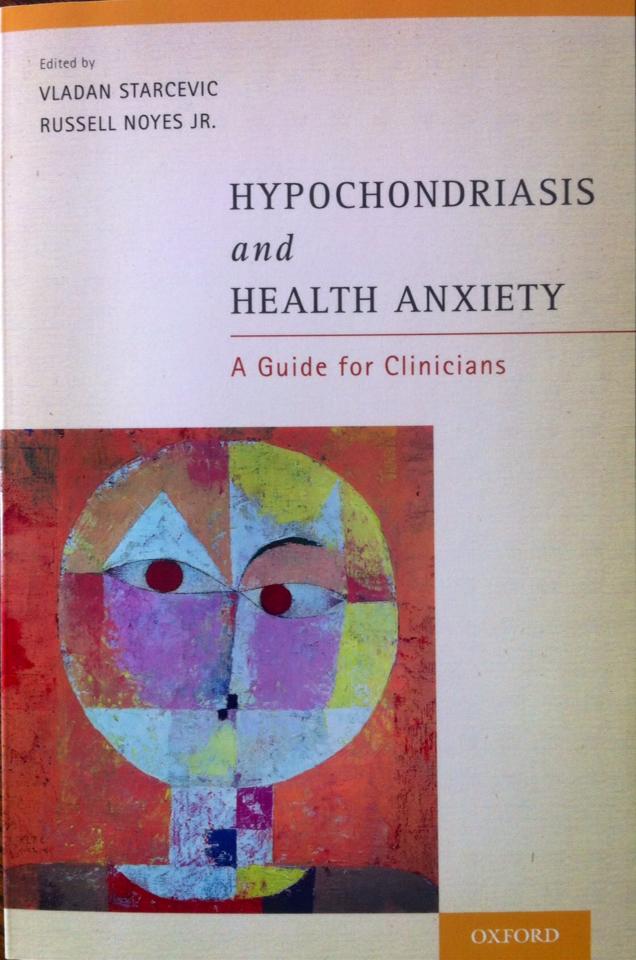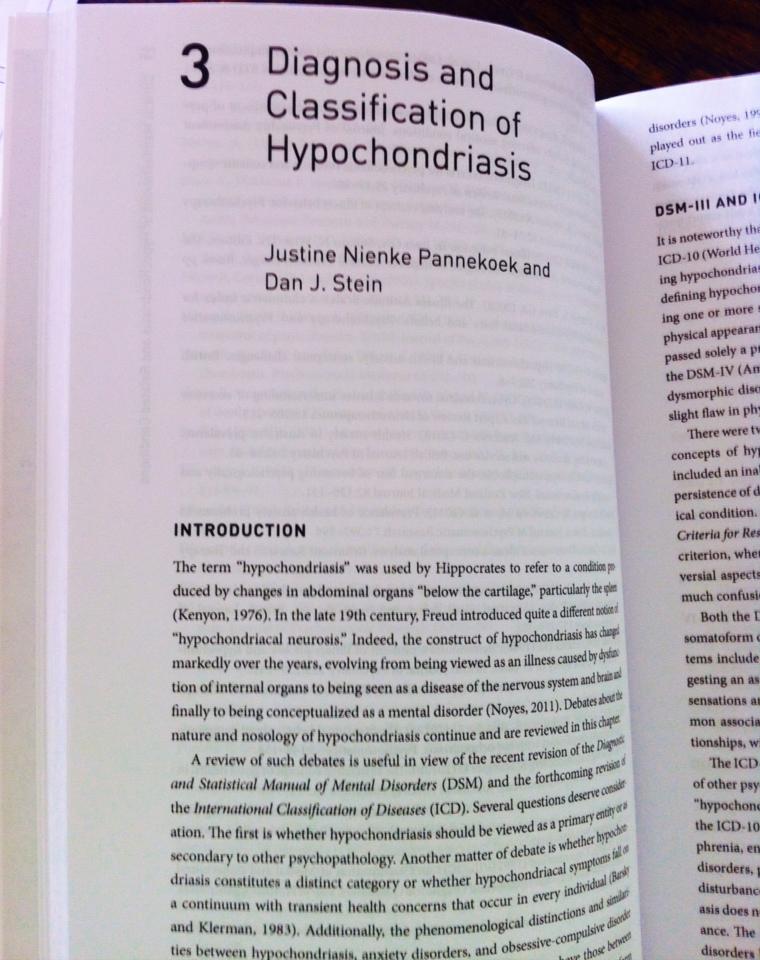It is not uncommon for people to jokingly use the term “hypochondriac” for someone when they are greatly exaggerating some seemingly trivial physical problem. In truth, as a result of my own ridiculous clumsiness, I’ll be the first to admit to probably having said “I’m crippled forever!” after again hitting my knee on a desk drawer/toe on a coffee table/hip on the corner of a shelve/shoulder on a doorpost/… (unfortunately, my list is endless).
One generally does not associate ‘hypochondriasis’ with anxiety. Neither did I. But when I was on my EUSARNAD programme in Cape Town to work on the so-called MEGA-SAD project (international, multi-centre MRI database of social anxiety disorder), and professor Dan Stein suggested to write a book chapter about the classification of ‘hypochondriasis’, I took the opportunity to learn. When thinking about “anxiety”, excessive worrying about one’s health and a preoccupation of having a serious illness are probably not the first things that spring to mind. It turned out that whereas the focus lies with physical symptoms in ‘hypochondriasis’, anxiety is actually one of the core issues of this disorder.
But what does it mean to actually suffer from ‘hypochondriasis’? And what exactly is it, anyway?
In short, what typifies ‘hypochondriasis’ is the conviction that one is suffering from a serious physical illness, based on the misinterpretation of bodily symptoms. This leads to repeated consultation with doctors, even after appropriate medical evaluation and reassurance that no illness is present. This belief persists for a period of at least six months, and causes significant impairment in social, occupational, or other important areas of functioning.
Since the archaic origin of the term, first introduced by Hippocrates, the construct has undergone a vast change over the years – first from stemming from abdominal issues, to being viewed as a problem deriving from the nervous system (Freud’s influence), to its final concept as a mental disorder. It has been subjected to tremendous criticism, disagreement between experts, and ongoing debate about its classification. Even with the recent appearance of the DSM-5, in which the controversial and inaccurate use of the term ‘hypochondriasis’ has been abandoned (which is why I write it in quotation marks), the dispute remains unresolved.
The disorder is, and has been throughout history, surrounded by a haze of issues. The symptoms patients present with are heterogeneous and show overlap with anxiety disorders, somatoform disorders, and obsessive-compulsive disorder. So where should it be classified? Also, the concept ‘hypochondriasis’ is stigmatised in society (“you are only imagining it”) as well as amongst clinicians, whose reassurance is dismissed and whose professional judgement is constantly doubted by their patient. Second opinions are often sought and GPs will be pushed for referral to specialists without the need for it from the clinician’s point of view. Poor patient-doctor relationships are often the result and lead to anger and frustration on both sides. Also, because of the focus on physical symptoms, it is very difficult for clinicians to recognise the mental origin of the disorder. All of the above makes it complicated to correctly diagnose someone as suffering from ‘hypochondriasis’. This has led to the realisation of a guide for clinicians, of which my chapter with professor Dan Stein is part. The book has only very recently been published, which prompted me to write a blog entry for the EUSARNAD website, not in the least because it is a concrete outcome from a collaboration established by EUSARNAD.
I had no idea how complicated and misunderstood ‘hypochondriasis’ is, and I was unaware of the controversy that has been around it for centuries – and still is. Unfortunately, mental health problems still come with a huge stigma, and in that ‘hypochondriasis’ seems to be one of the frontrunners.
Key to EUSARNAD is advancing research in anxiety by uniting researchers from all over the world and thus allowing them to collaborate closely and generate new ideas. EUSARNAD also enables individual researchers to gain wide-ranging, additional insights that go beyond the initial purpose of their exchange schemes; to think slightly out of the anxiety box – this book chapter is a clear example. From this opportunity to write the chapter I have not only learned about ‘hypochondriasis’, but I now also have a better appreciation of the heterogeneity and delicacy of psychiatric disorder in general. Within this niche, however small it may be, I am very grateful to have contributed to a book that can hopefully make the lives of clinicians a little easier in their understanding of the disorder, and most importantly, of their patients.
– Nienke
(For those interested, the book is now available! “Hypochondriasis and Health Anxiety: A Guide for Clinicians” – Editors Vladan Starcevic and Russell Noyes)


